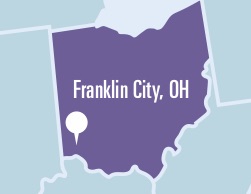Superintendent Michael Sander has closed the achievement gap in his Ohio school district—with help from an operational levy that raised $3.1 million in 2014.
“Our community cares about education, but they are not just going to give you money for a general fund,” says Sander, of Franklin City Schools. “Their mindset is ‘if there’s a specific reason to raise funds, tell us, and if we believe in it, we will support you.’”
Sander won community support with four key goals:
- Make kindergarten full-time.
- Increase reading scores using three web-based programs.
- Revamp summer school for at-risk students.
- Increase parent interaction with learning.
Improving test scores
For years, third-graders struggled with a reading test they must pass to take fourth-grade ELA classes. Students also scored below average on kindergarten reading-readiness assessments. Sander believed full-time kindergarten could improve results. “We had to get our students in school longer,” he says.
With the levy funds, Sander hired four more teachers and equipped four spare kindergarten classrooms with new furniture and technology, including smartboards.
Sander also introduced a software intervention program, digital curriculum and computer-adaptive testing.
Students from kindergarten through middle school now spend 40 minutes per day in the computer lab to build foundational cognitive, language and reading skills.
Each lab is staffed by an instructional technology assistant, who has received special training for this higher-paid teaching position.
Many educators have added software programs to 90 minutes of daily, mandatory ELA instruction. The curriculum aligns with an assessment given to students three times per year.
Preventing the summer slide
Sander encourages students performing below grade level to attend a six-week summer school that he revamped in 2015. The cost is $120, and parents provide transportation.
“We need a commitment from parents so we can hire the teachers we need,” says Sander. Since Franklin City Schools’ general fund supports the program, students who attend 90 percent of classes earn full refunds.
During these three-hour school days, students participate in digital learning programs and receive two meals. In a new robotics club, students this past summer made aerodynamic paper airplanes and javelins, and designed flags.
“Students didn’t want to come if it was just a classroom, so we made it fun,” says Sander.
In addition, the district provides free mental health counseling.
Increasing parent interaction
In 2016, Franklin City Schools began lending 60 take-home Chromebooks to K1 students with the lowest reading scores. Two community organizations funded the program.
Monitoring software shows educators if parents are using the devices with their children. “This helps parents take an interest in their child’s learning,” says Sander. Families without internet service receive wireless sticks to connect.
The district also locks every Chromebook so students can only access specific educational websites and platforms.
“In this initiative, parents help their children, and children make an investment in their parents,” says Sander.
Franklin City Schools:
Kindergartners: 194
Grades 1 through 8: 1,309
Grades 7 and 8: 486
High schoolers: 913
Free or reduced-price lunch: 53%
At-risk: 29%
ELLs: <1%

Students passing third-grade reading assessment
2015: 73.4%
2016: 54.1%
2017: 64.0%
Spring 2018: 98.2%







